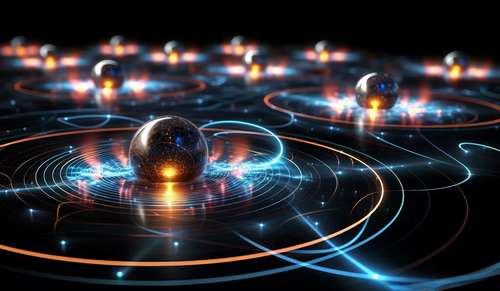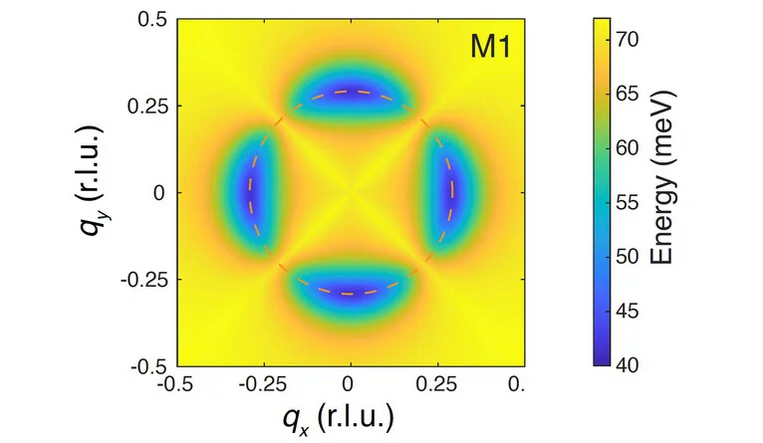
A Yale-led team of physicists has discovered a circular pattern in the movement of electrons in a group of quantum materials known as “strange metals.”
“Strange metal,” that rogue phenomenon of the electrical realm, just became a little less enigmatic.
Identified more than 40 years ago, strange metal is a state of matter found in many quantum materials — including certain superconductors that scientists say may be vital for high-tech products of the future. The “strange” part of strange metal is its electrons: they defy the traditional rules for electron movement and conductivity.
Unlike most metals, in which electrical resistance increases with the square of temperature, strange metals have an electrical resistance that increases in proportion to temperature. This “linear-in-temperature” behavior defies physicists’ understanding of how electrons move in solids.
“This strange metal behavior is seen in many different materials, where at first glance, you wouldn’t think there is anything that ties them together,” said Eduardo H. da Silva Neto, an assistant professor of physics in Yale’s Faculty of Arts and Sciences and corresponding author of a new study in the journal Science Advances. “Most of the previous work investigating the strange metal phenomenon has focused on its ‘symptoms’ — its linear temperature resistance, for instance — rather than directly measuring the exact movement between electrons.”
There is no established theory for the strange metal phenomenon, da Silva Neto said, but most researchers believe that the linear-in-temperature behavior results from electrons that must be able to scatter in all directions. However, in the study, da Silva Neto and his colleagues found a discernable, circular scattering pattern in the way electrons move within strange metal.
The new study is an extension of da Silva Neto’s earlier work examining electron interactions in copper oxides. In that work, he and his colleagues discovered a similar circular pattern. Using a method called resonant inelastic X-ray scattering (RIXS), they saw that electrons created fluctuating waves of electrical charge in all directions.

“What we realized was that our previous results in 2021 could be relevant to understanding strange metal,” da Silva Neto said. “However, for our circular pattern to be relevant for the strange metal phenomenon, we had to show that these circles existed at low energies.”
For the new study, the researchers devised a methodology for directly measuring electron scattering at low energy in strange metal. They used state-of-the-art RIXS instruments at the National Synchrotron Light Source II at Brookhaven National Laboratory and at Diamond Light Source in England.
The next step for researchers is to measure electron movement in more examples of strange metal.
“Strange metal seems to be inexorably connected to quantum materials with great societal benefit, potentially,” said da Silva Neto, who is affiliated with the Energy Sciences Institute at Yale’s West Campus. “Furthering our understanding of their behavior has importance both intellectually and in terms of practical applications.”
Kirsty Scott, a Yale graduate student in physics, is first author of the new study. Co-authors include researchers from the University of California-San Diego, the Institut National de la Recherche Scientifique in Canada, and North Carolina State University.
Funding and resources for the study came, in part, from the National Science Foundation, the U.S. Department of Energy Office of Science, and the Alfred P. Sloan Fellowship.
This article was taken from the Yale News article of July 19, 2023 by Jim Shelton. Please see below for the link to the original story, plus related links.